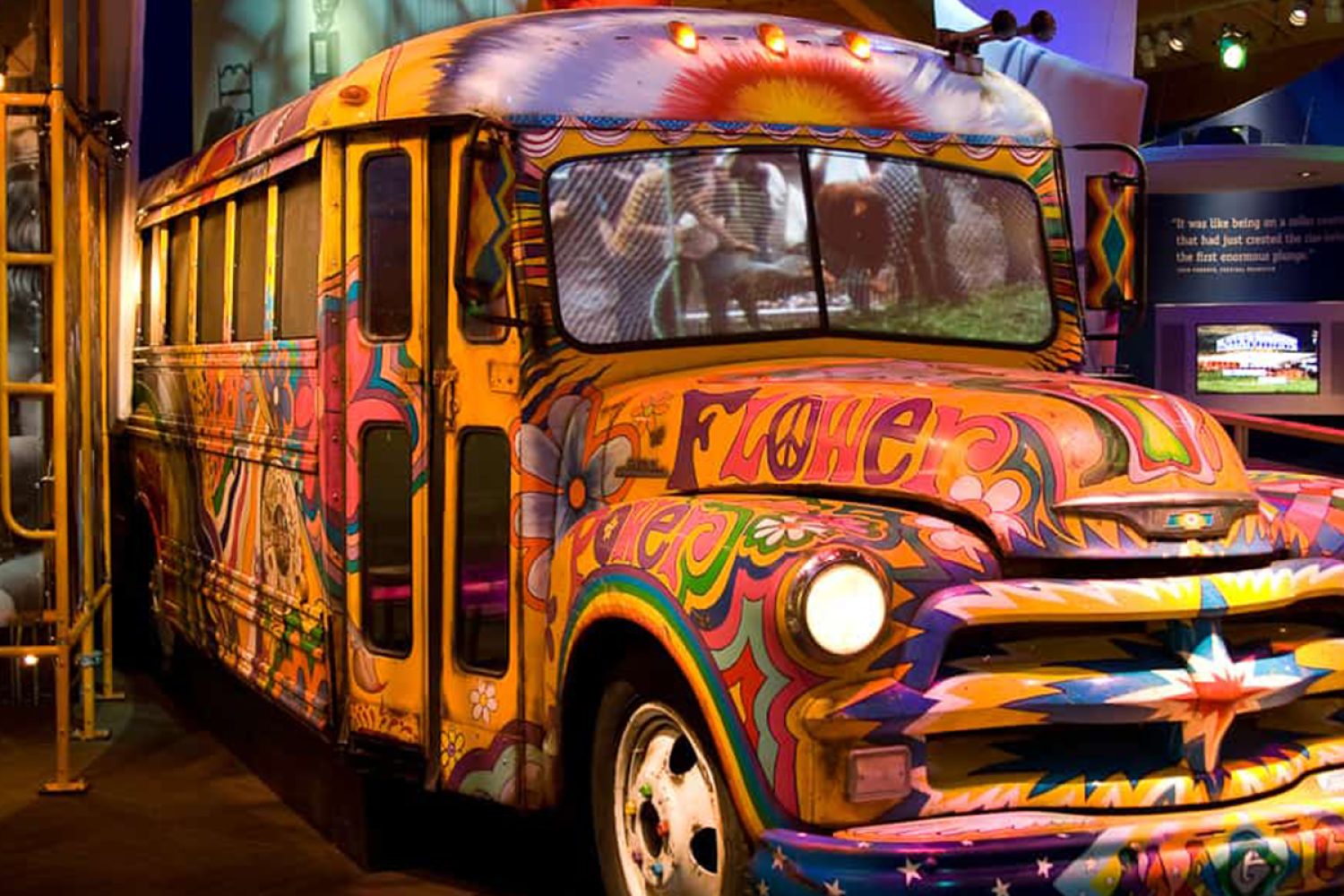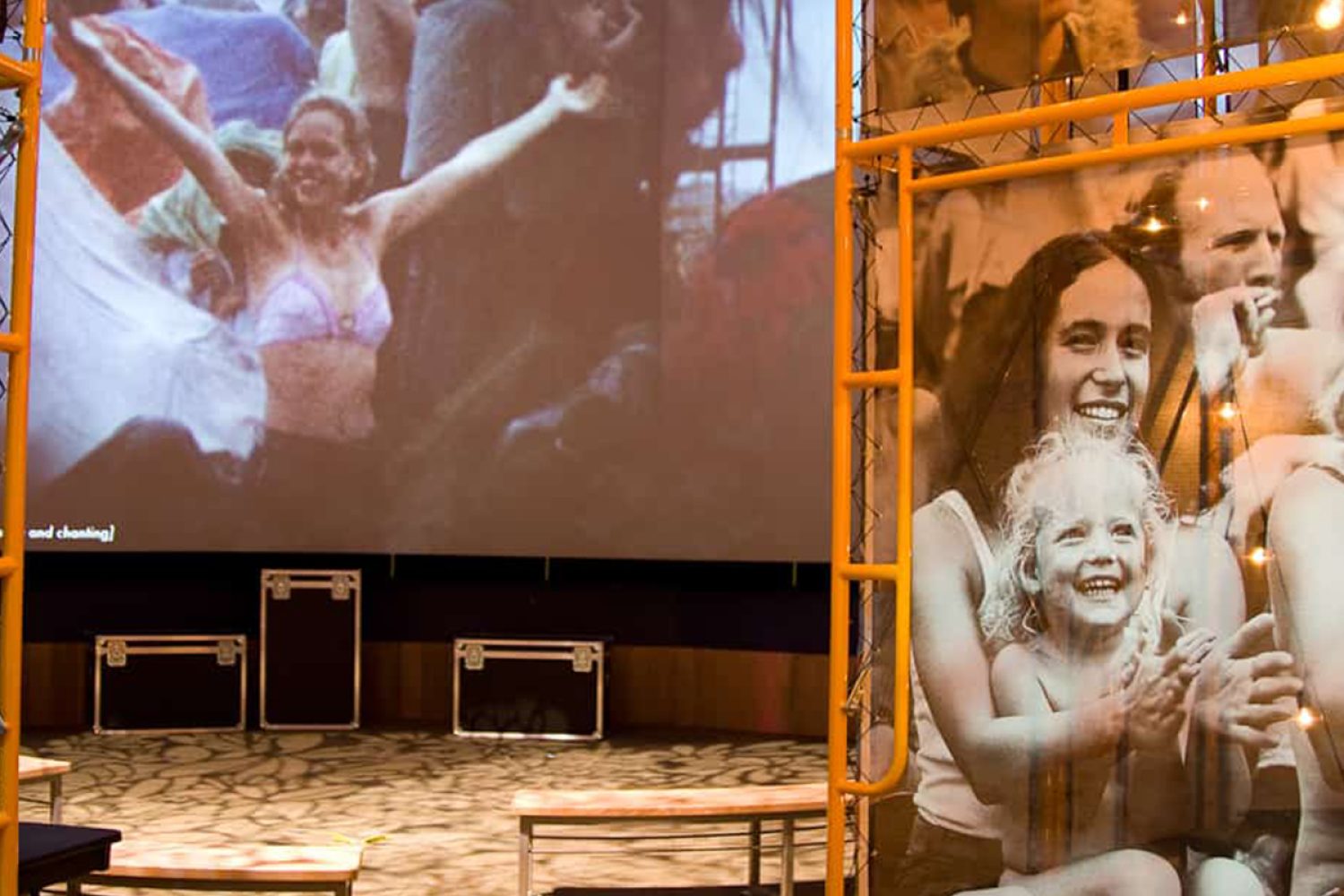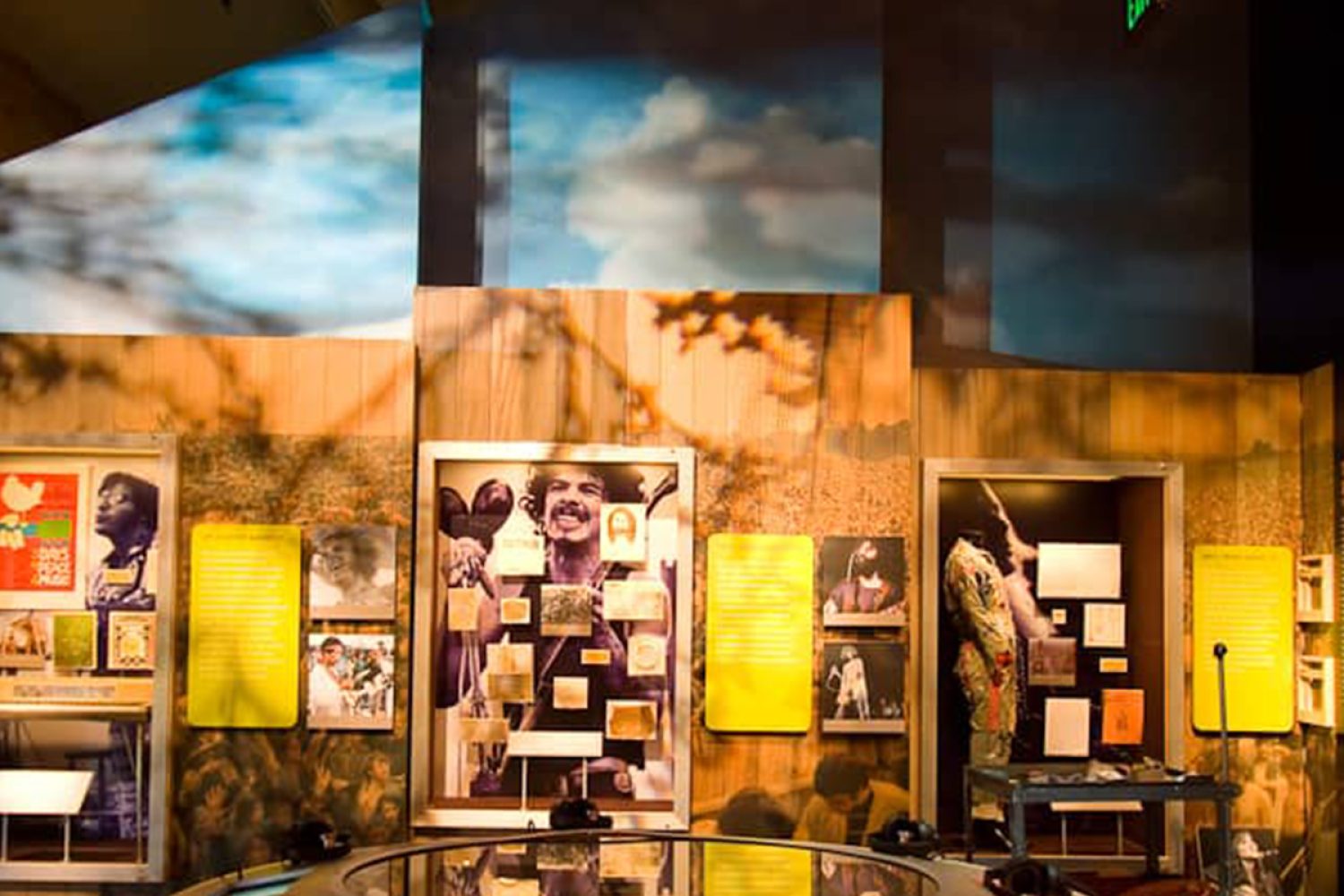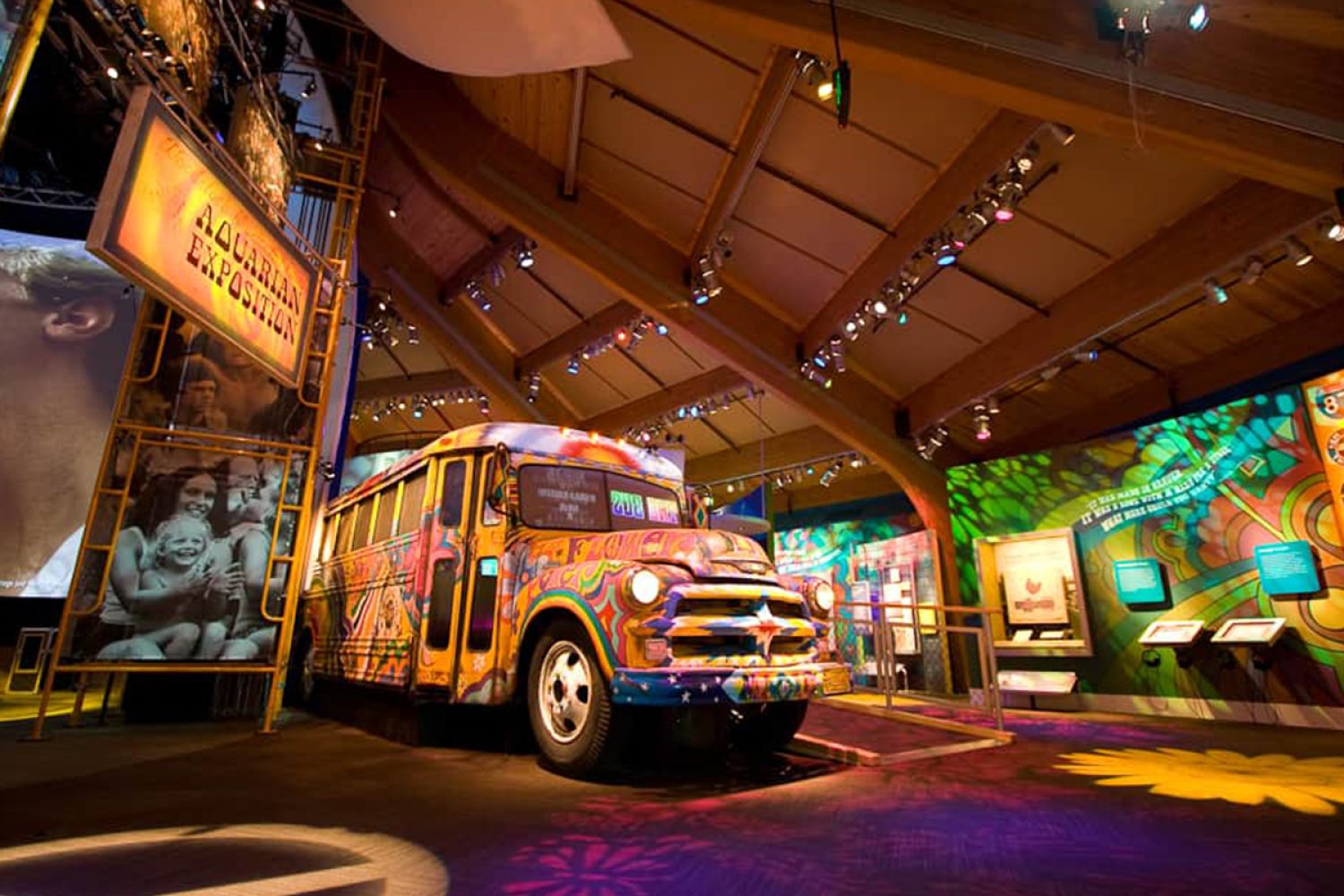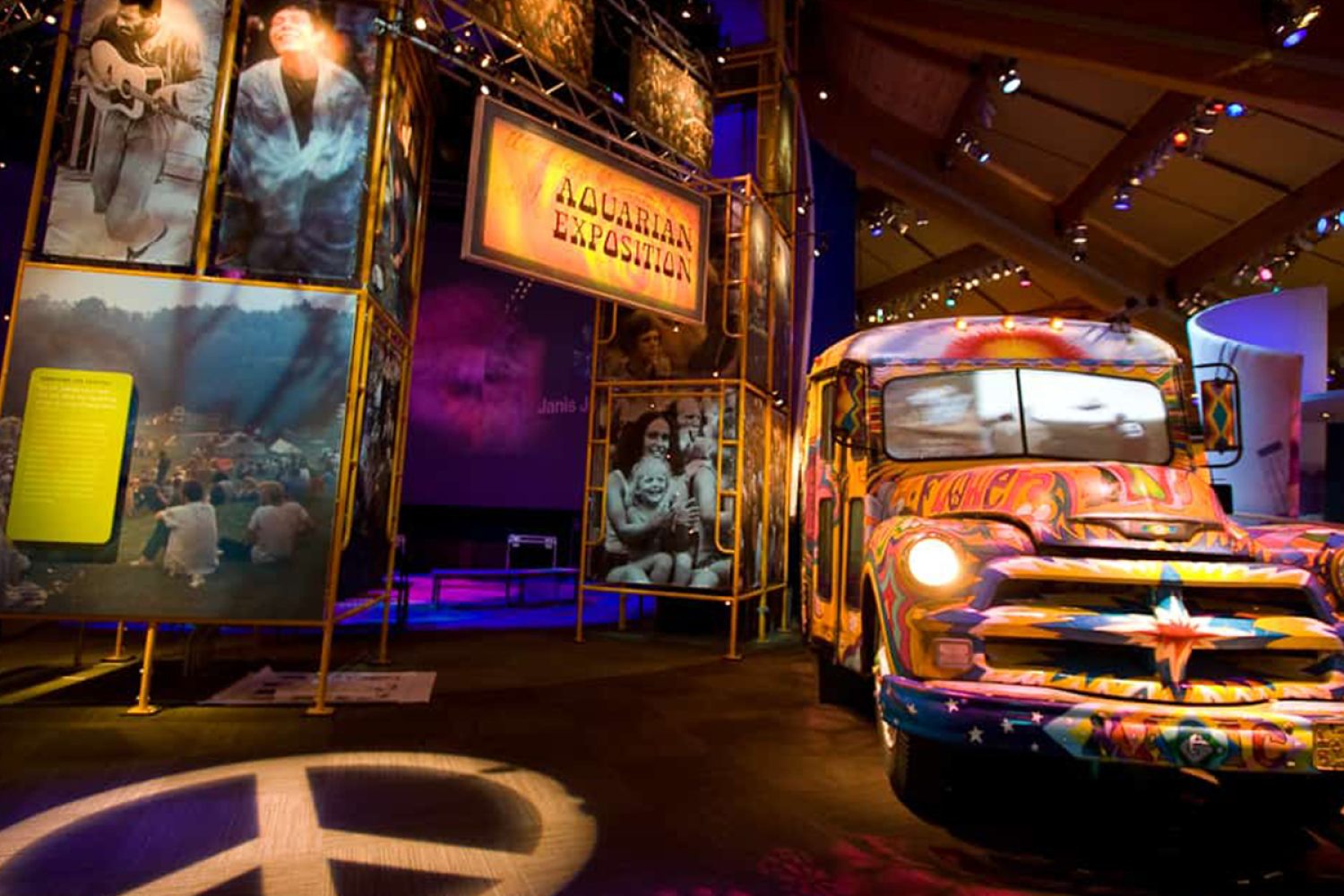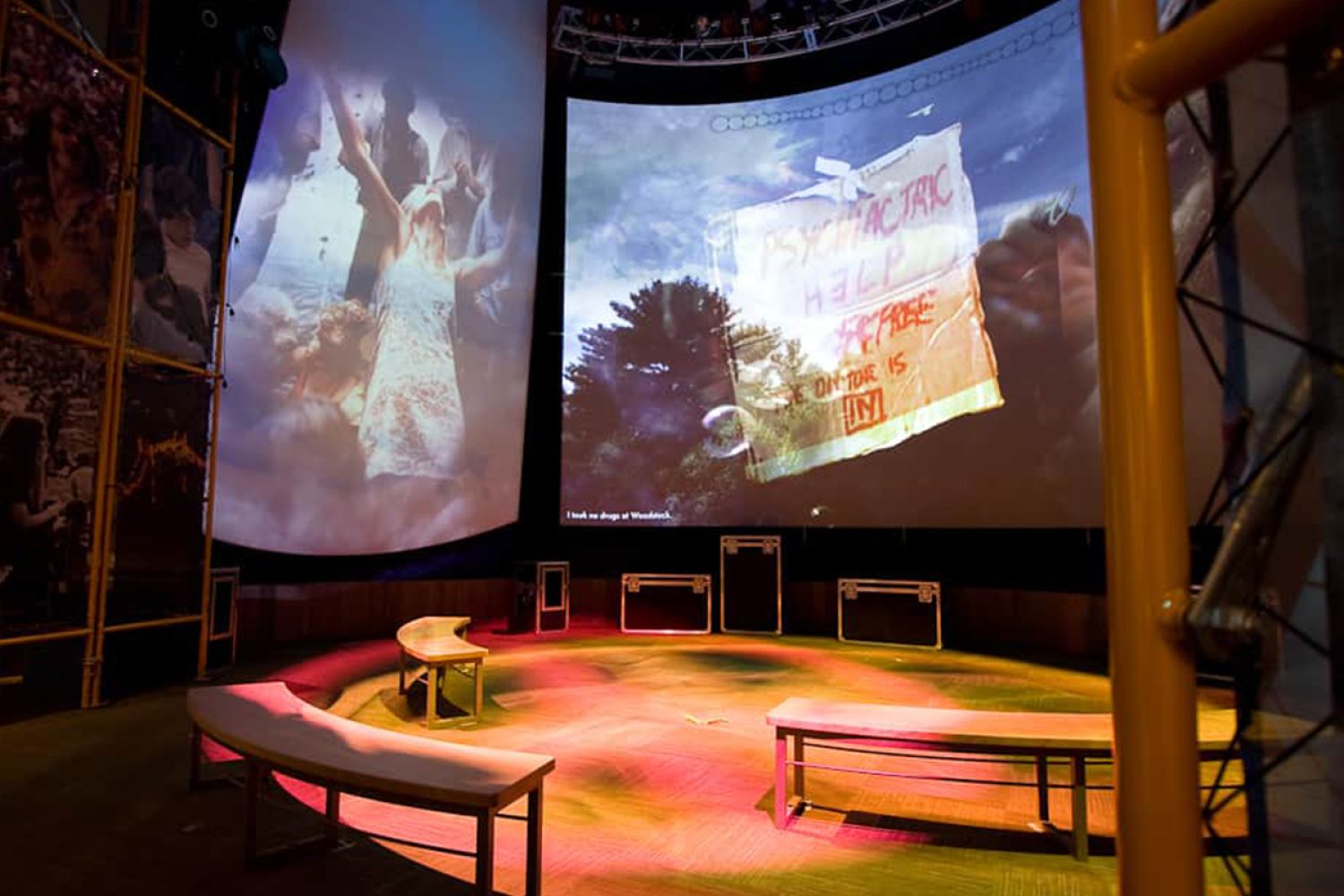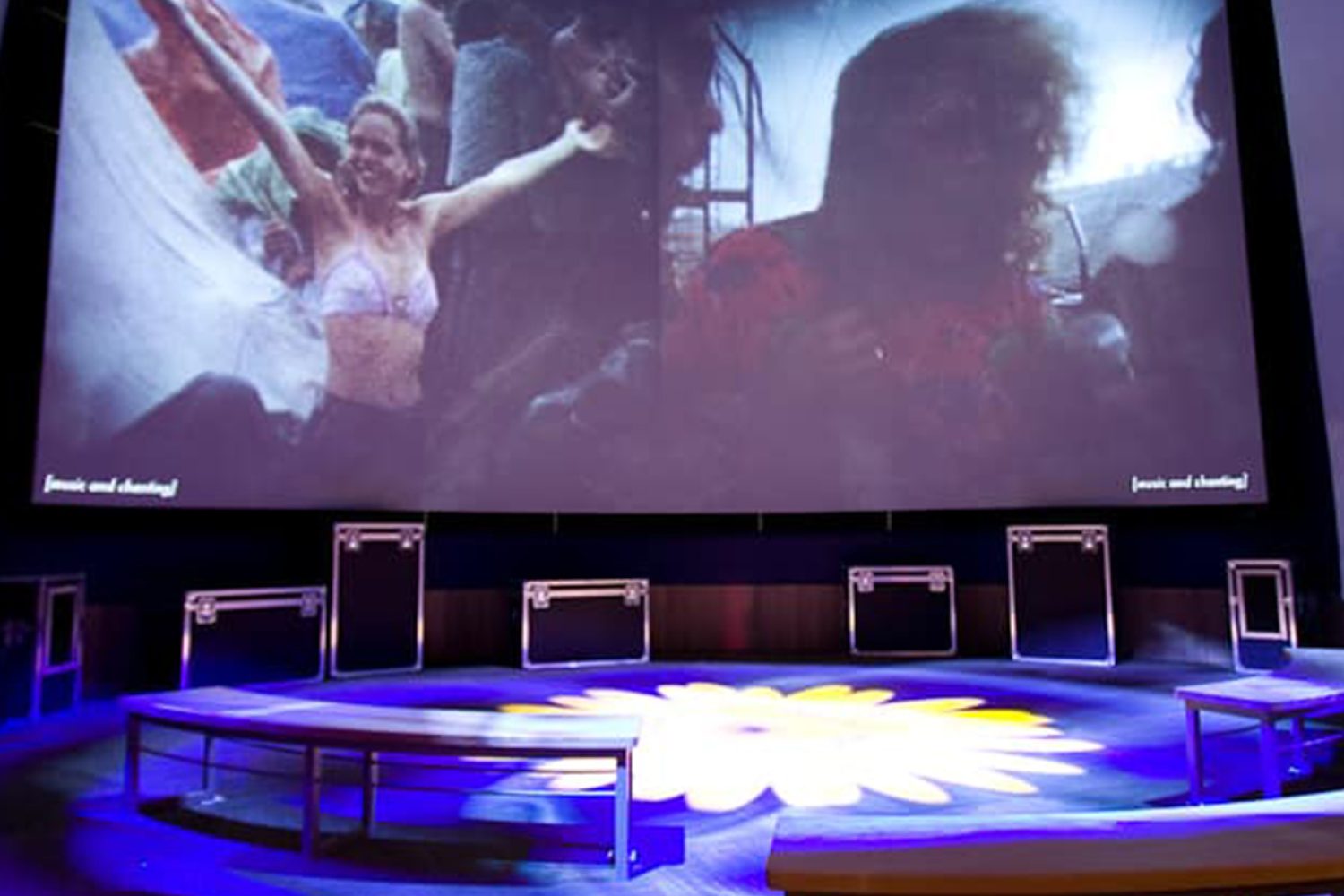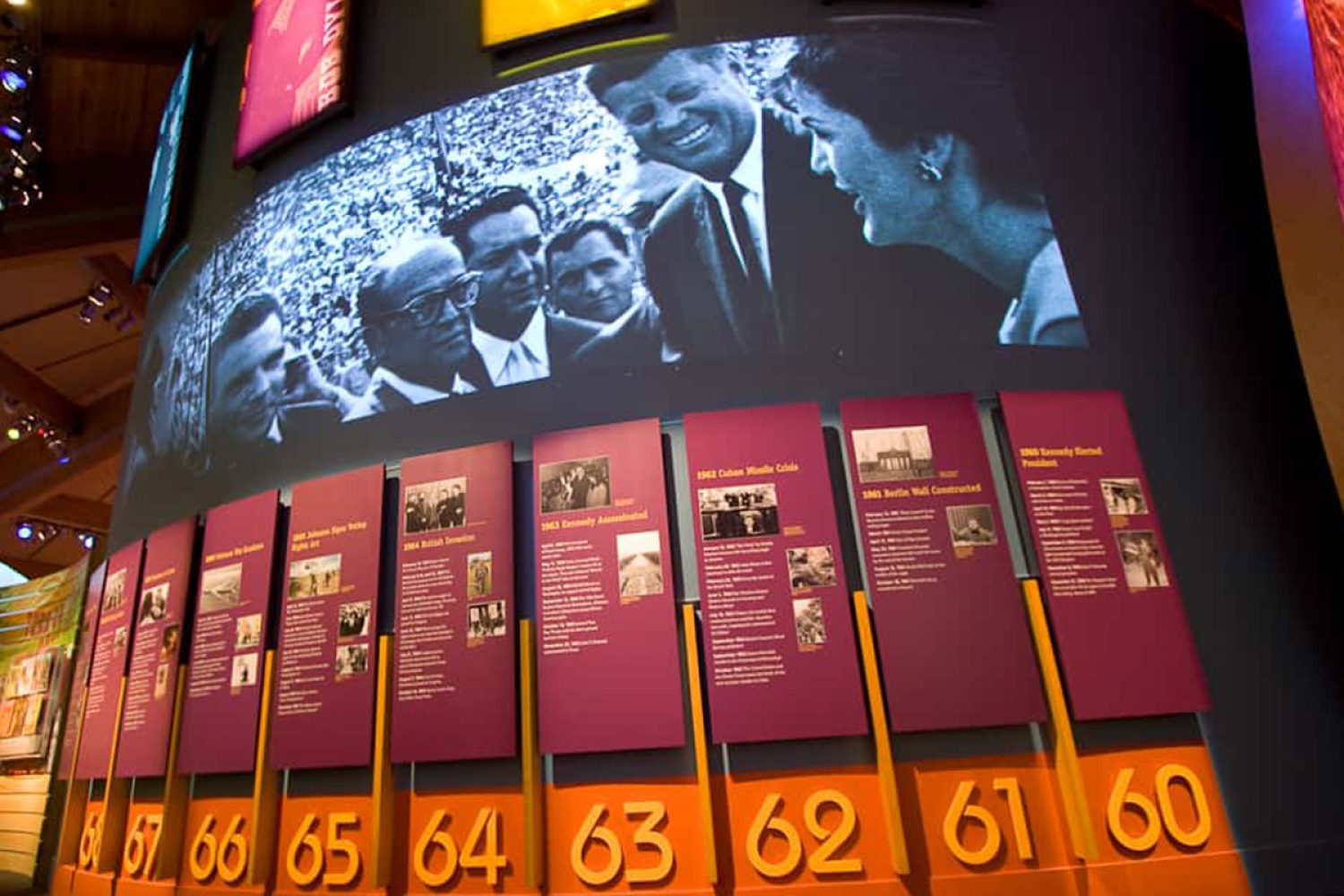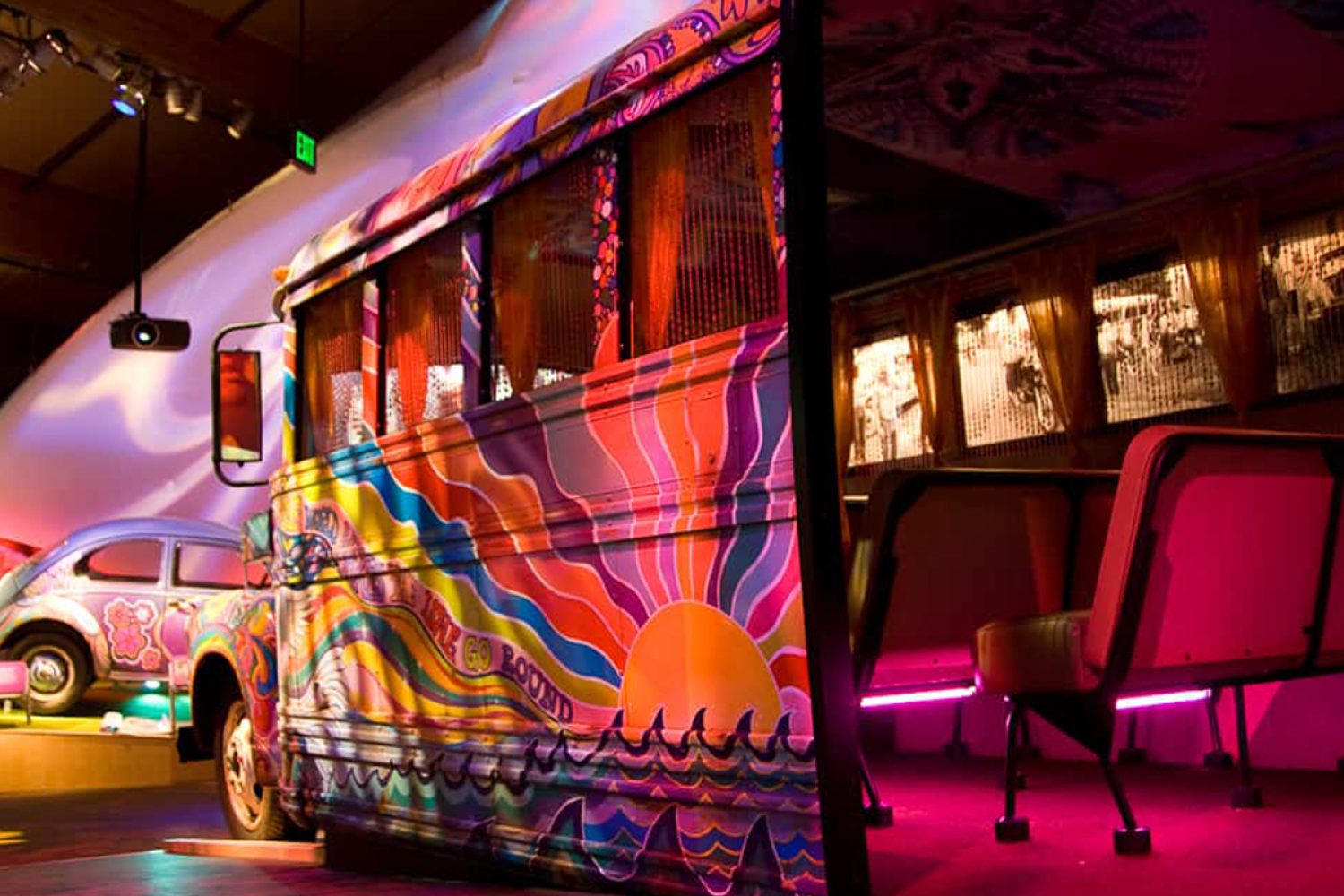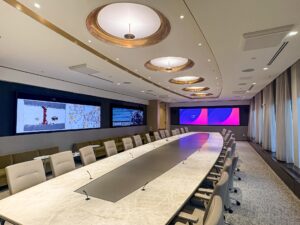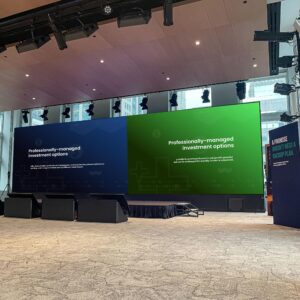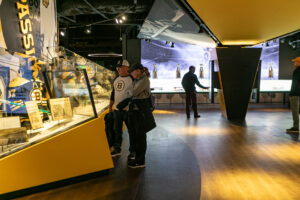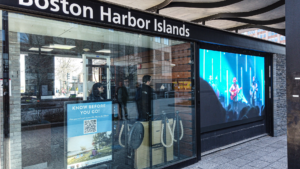Built on the site of the 1969 Woodstock Festival, the Bethel Woods Center for the Arts is home to a 10,000 sq. ft. museum. The museum serves as an educational and informational facility examining the social and cultural legacy of the 60’s as well as the evolution of popular music.
McCann Systems created the audio visual environment for the museums immersive, multimedia exhibits, interactive displays and the accompanying AV control systems.
McCann’s specialists began by analyzing the consultants’ conceptual plans for the space as well as the content providers’ ideas. McCann created, adjusted and breathed life into the visions by using the latest trends and technology.
Touch screens were used throughout the interactive areas. In one location, touch screens allowed visitors to see and explore the Festival’s bands through a musical time line stretching from the 60’s to present day. Music could be searched for by category or era. Guests can also review the schedule followed at the Festival. The touch screens run on custom software utilizing cutting-edge flash technology. Each touch screen features two permanently installed headphones and a jack for visitors to plug in their own headphones.
The museum’s intimate “68” Theater, delivers content produced by the History Channel. We created the theater’s audio video control systems and closed caption functionality, including ability for the user to turn the closed captioning on or off.
In the 130-seat Woodstock Theater area, we installed an HD projector and a perforated screen behind which we placed speakers and integrated a high-end audio video system. The continuous loop film highlights the music experience of the Woodstock Festival.
Another inventive interactive area allows visitors to take their own picture and use the integrated microphone to add an audio message to it. The photo and the accompanying message are then stored in the museum’s archives. In years to come, visitors and friends can call up that photo and message and leave one of their own. It is in effect, a brilliantly designed interactive time capsule.
Another novel interactive area is the McCann designed map table. The table displays an aerial view of the Woodstock Festival site. Surrounding the table are six small touch screens and headphones. Visitors control their own icon on the map. When the icon is rolled over points on the map, descriptions of the specific area and its Festival significance are revealed.
One of the technical challenges involved creating a low profile, AV-equipped map table at a comfortable height for children and adults. To accomplish this, we installed a projector under the table. To accommodate the projection geometry necessary for this small, low space, we deftly squeezed in a tiny mirror sled to work in tandem with the projector.
The bus area is an actual school bus painted and decorated, inside and out, to resemble a “hippie” inspired bus of the sixties. McCann’s AV specialists were called on to help create a projection screen on the interior of the windshield and integrate the audio as well. A video program was projected onto the windshield for audiences inside the bus to view.
The difficulty here was that the windshield of an old school bus is oddly shaped. This necessitated the construction of a template for Stewart Filmscreen to follow in order to make the screen contour perfectly to the window. Next, we created a pixel map for the content builders to follow so that images avoided going over the middle of the window while still tracking the screen’s contours.
The museum’s Festival Experience area uses six projectors blended to create one large image on a 40’x 20’ seamless, perforated curved screen. Behind the perforated screen we placed a high-end audio system. Three other projectors, complemented by small mirrors, fold the light into a vertical portrait mode and bounce video on to scrims above. The entire AV experience immerses viewers in a trip through the 60’s.
McCann was also called on to create the AV design, hardware, cameras, printers, flash technology and other equipment for a self-portrait area. The concept was somewhat similar to an amusement park photo site where visitors dress in clothing of a bygone era and have their picture taken. Here however, McCann’s concept permits visitors to have their picture taken and then have their photo virtually inserted into any number of chosen scenes with 60’s-era costumes, hair styles and accessories. The final photo is printed for immediate purchase.
Utilizing Medialon, our programmers wrote software allowing the museum’s staff to simply and effectively custom build, tailor and tweak individual shows. Medialon also gives the staff the ability to change start times, closing times and modify individual areas without having to call on McCann for minor changes and alterations.
We also created a Dashboard program that delivers a status overview of the system’s activity and health at any given time. It can pinpoint a specific area and tell you if the AV equipment area is on or off. If it’s on, it can show you what clip is playing. The system will advise of any problem areas and provide a system health status. We also programmed it to send immediate email alerts.
While McCann provides one of the industries strongest warranty program, we always prepare for contingencies. To minimize downtime in the event of a parts failure, like a burned out projection lamp, we developed a spare parts kit for the museum’s AV staff. In addition, we supplied two spare projectors as replacement equipment to be used if and when an original projector failed and was sent out for repair. This type of foresight is a common element in all McCann Systems’ projects.
